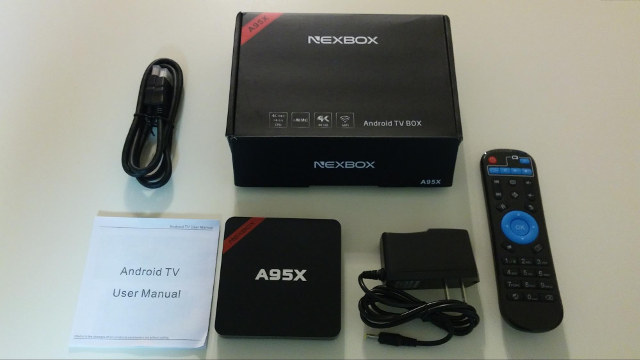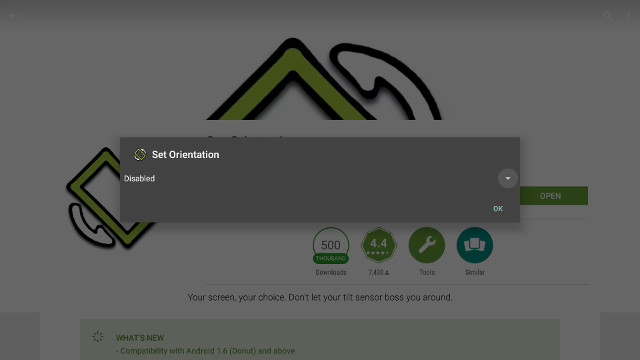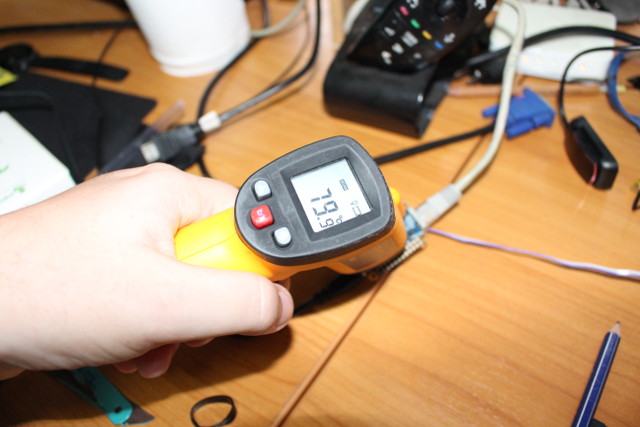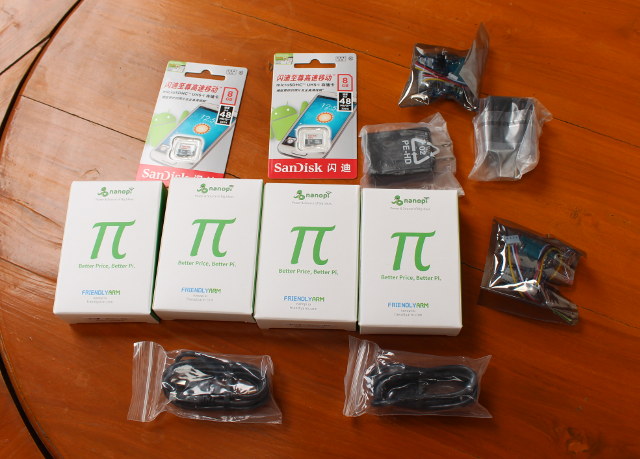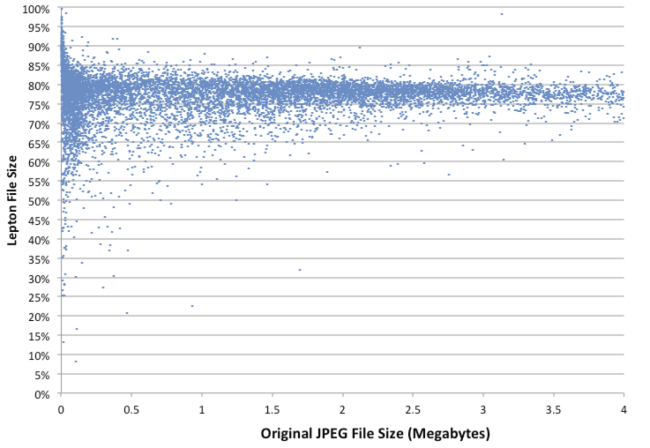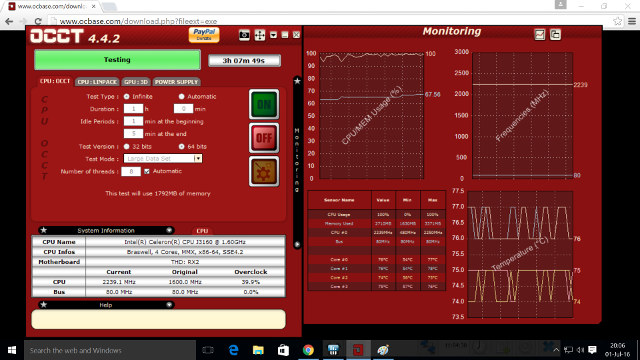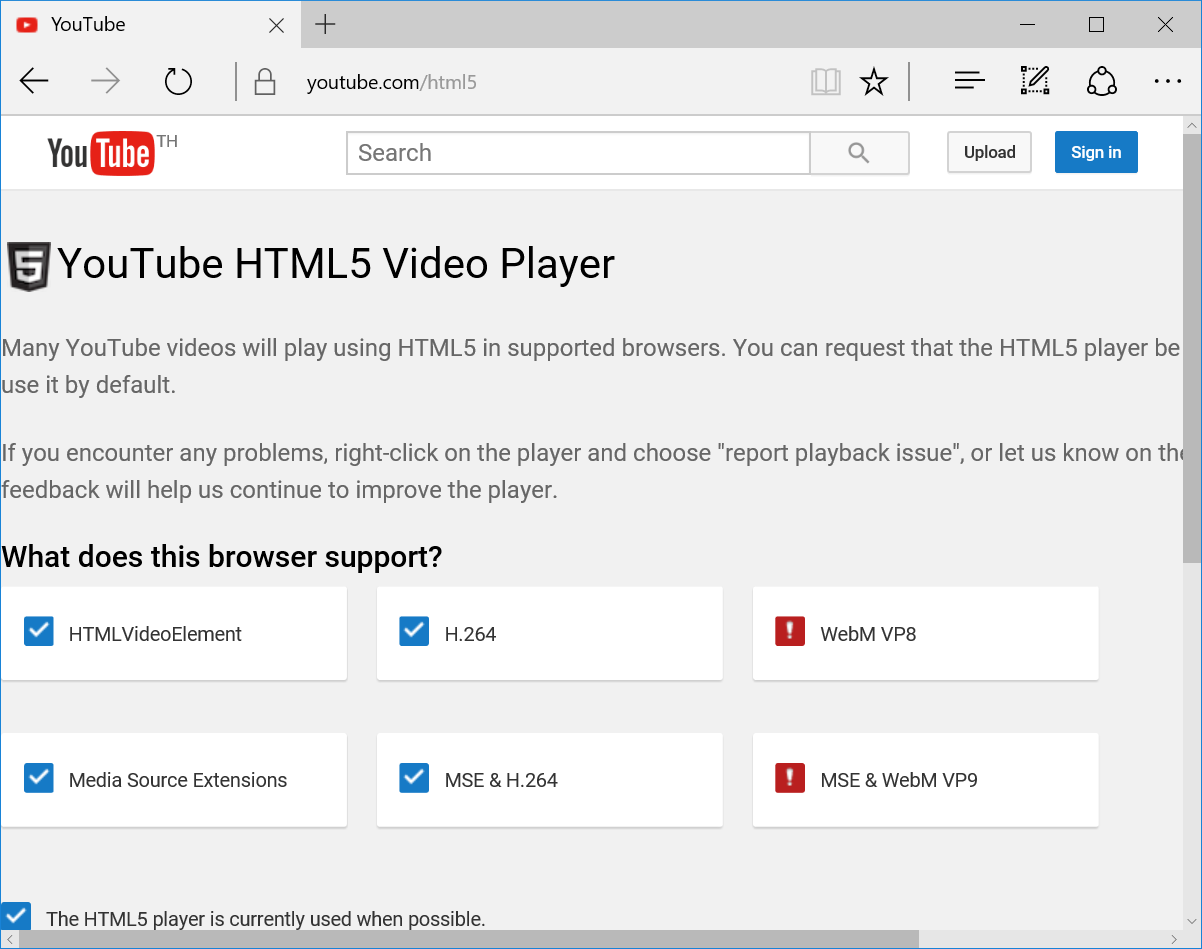CNXSoft: Bear in mind that there are multiple versions of Nexbox A95X. Yesterday, I published the review of Nexbox A95X with Android 6.0, with the model based on Amlogic S905X processor. In this article, Karl had a look at Nexbox A95X with Amlogic S905 processor, which he purchased a couple of months ago, but since he was not happy with the Android 5.1 firmware, he decided to customize it. Karl here with a review of the Nexbox A95X S905 box. This took a while to even start. I received the box about 2 months ago and I dived right in and broke it. I didn’t have factory firmware, and wasn’t cautious enough and bricked it. I found some firmware that worked but it didn’t work very well for me. Email’s to Nexbox directly didn’t help and I was stuck with a bricked box… I later found someone who had factory […]
How to Set an Android TV Box Video Output to Portrait Mode
Most buyers who buy an Android TV box just want to use it to watch videos, browse the web, play games, and so on, so landscape mode seems to be the best choice, and the orientation option in the firmware is often disabled. However, TV boxes can also potentially be used as digital signage players, which may require landscape or portrait modes if the screen is positioned vertically. Since I’ve just been asked that question, I’ve checked for a solution, and luckily there’s an app called Set Orientation that does the job. [Update August 2021: The app has been removed from the Google Play store, it might be worth trying Screen Rotation Control app instead] When you first start the app, it will show the option “Disabled”, but you can click on the arrow to reveal more options, and select Portrait to rotate the screen. In case the screen is […]
FriendlyARM NanoPi NEO Board Benchmarks
We’ve already seen how to setup NanoPi NEO with Ubuntu Core, and while it’s mostly designed as an IoT node, for example to control relays over Ethernet or the Internet, I’ve still decided to see how it would perform under load by running Phoronix benchmarks, and then network and storage (micro SD card provided by FriendlyARM). It’s a small board, so we should expect it to heat a lot under load, especially it does not come with an heatsink by default. Also bear in mind that performance may dramatically change depending on the software implementation, and for the test, I’m using the company’s Ubuntu Core firmware. Before start the benchmark, I noticed that QTe-Demo was running in the background, probably because it was used on their other board with video output or LCD. but it’s taking some CPU usage, and is absolutely not needed here. To disable it, edit /etc/rc.local, […]
Getting Started with NanoPi NEO Development Board – Ubuntu Core Firmware
NanoPi NEO is an exciting ARM Linux board due to the power it packs into its small size, and its low price starting at $7.99. It’s made by FriendlyARM, and since I’ve read some people had never heard about the company before, I’d like to point out it has been providing development boards well before the Raspberry Pi board was launched, with products such mini2440 based on a Samsung ARM9 processor introduced around year 2010. Anyway, I asked the company if they were willing to send 2 samples for review, as I plan to remove the USB & Ethernet port on one of them. Instead I got a 4 boards and accessories, so I’m going to start reviewing the board by writing a quick start guide, showing how to setup it, and check out the Ubuntu core provided by the company. If you are a fan of armbian made Debian […]
Lepton Image Compression Achieves 22% Lossless Compression of JPEG Images (on Average)
Dropbox stores billions of images on their servers, most of them JPEGs, so if they can reduce the size of pictures it can have a big impact on their storage requirements, so the company developed Lepton image compression, which – on average – achieved 22% lossless compression on the images stored in their cloud. Compression and decompression speed is also important, since the files are compressed when uploaded and uncompressed on the fly when downloaded so that the complete process is transparent to the end users, who only see JPEG photos, and the company claims 5MB/s compression, and 15MB/s compression, again on average. The good news is that the company released Lepton implementation on Github, so in theory it could also be used to increase the capacity of NAS which may contain lots of pictures. So I’ve given it a try in a terminal window in Ubuntu 14.04, but it […]
Morefine M1+ Review – A Dual Boot Windows and Android TV Stick
Karl here and I will be reviewing the Morefine M1+. It is an Intel based stick PC with an Intel Atom x5-Z8300 processor with 2GB RAM and 64 GB of storage. It dual boots Windows 10 Home 32 bit and Android 5.1. In this review, I won’t be doing many benchmarks because they have been done a lot in the past. Be careful when researching this product because there are 2 devices with same name with different specs. The other one has an Intel Atom z3735 and only 32GB storage and Android 4.4. The box came expertly wrapped and I have never seen a package delivered and protected so well. In the box was the stick, short HDMI extension, power cable, and instruction manual. No micro USB OTG cable is included. I didn’t find this an issue because I had several already. Specs OS Version: OS Windows 10 (Trial Version) […]
Stress Testing Windows mini PCs with OCCT Overclock Checking Tool
I’m mostly a Linux user, but the marketplace has chosen Windows 10 as its preferred operating systems for mini PCs, so I’ve been reviewing fanless (or not) mini PCs running Windows 10 for around two years since Intel decided to provide low cost and low power processors. I normally run some benchmarks such as PCMark 8 or 3DMark, as well as typical user tasks, while monitoring CPU temperature and throttling using HWInfo64 utility, but those benchmarks are not really pushing the device to its limits. However, I’ve just learned out about OCCT “Overclock Checking Tool” that’s just doing that, and installed OCCT 4.4.2 on Vorke V1 to check it out. The tool has four taps: CPU: OCCT, CPU: Linpack, GPU: 3D, and Power Supply to stress test different part of the system. I just let it run for over 3 hours after pressing the ON buttons, and you can see […]
Improve YouTube Video Playback on Low Power Intel mini PCs by Disabling VP9 Support in Chrome or Firefox
I’ve been reviewing several Intel Bay Trail, Cherry Trail, and Braswell mini PCs in the last year or so, and I always end up recommending Microsoft Edge browser over Firefox or Chrome for people wanting to watch YouTube videos, as the last two browsers always drop many frames with the video stuttering regularly. However I noticed that while Edge is playing MP4/AVC (H.264) video, the other two browser would normally stream WebM/VP9 videos, and it could be the cause of the problem as H.264 can be hardware accelerated, but VP9 not, and the low power processor might not quite powerful enough to handle 1080p VP9 video decoding smoothly. So I investigated the issues with Vorke V1 mini PC powered by an Intel Celeron J3160 processor (6W TDP) with the three browsers by first checking enabled codecs in YouTube HTML5 page. Microsoft Edge has both VP8 and VP9 disabled When I […]


